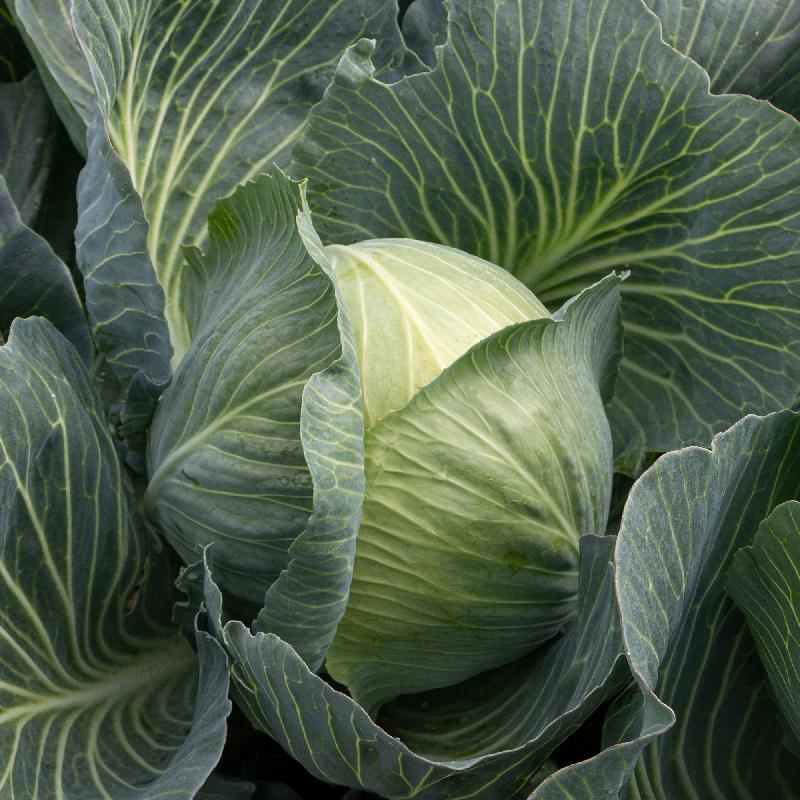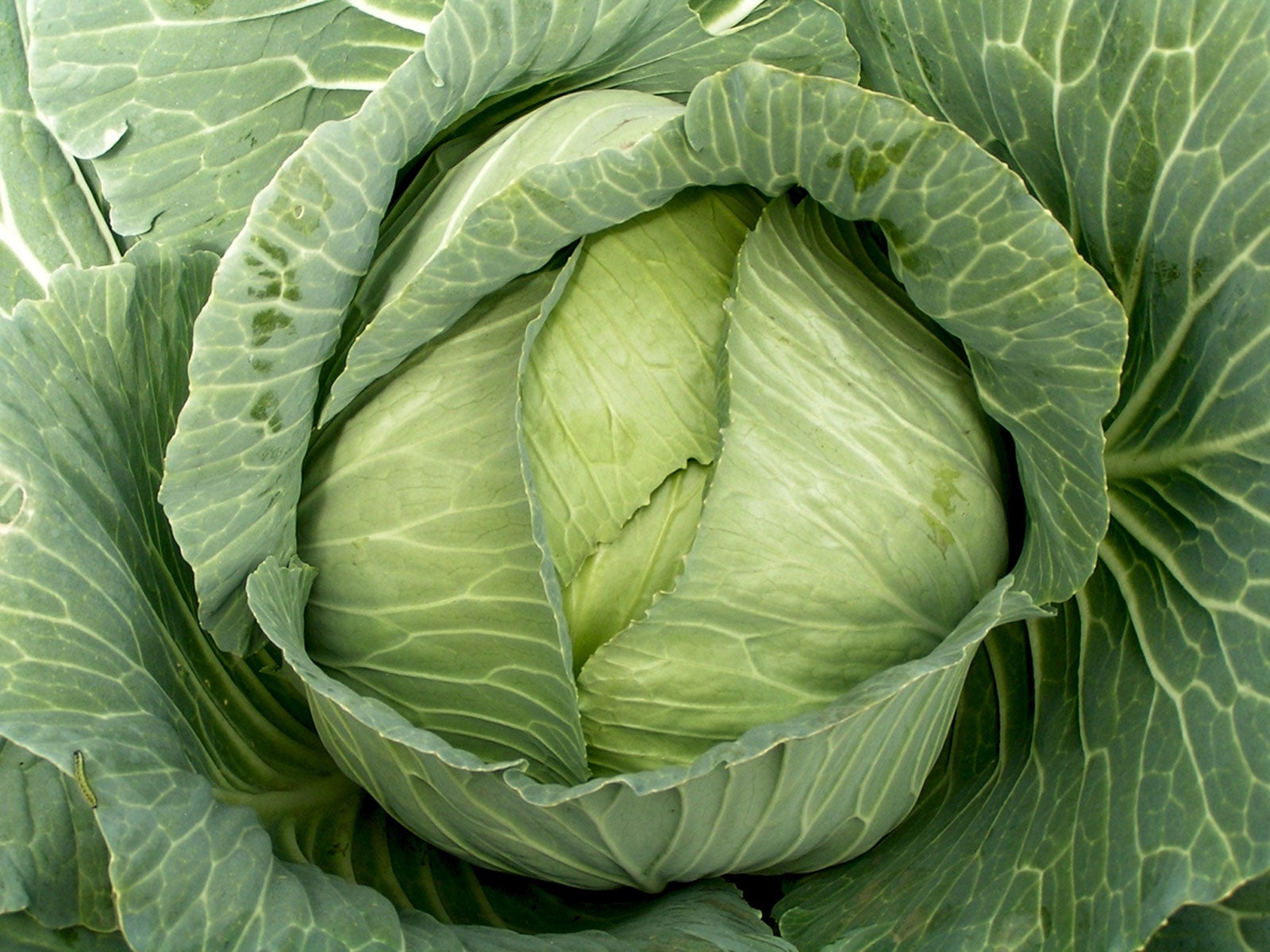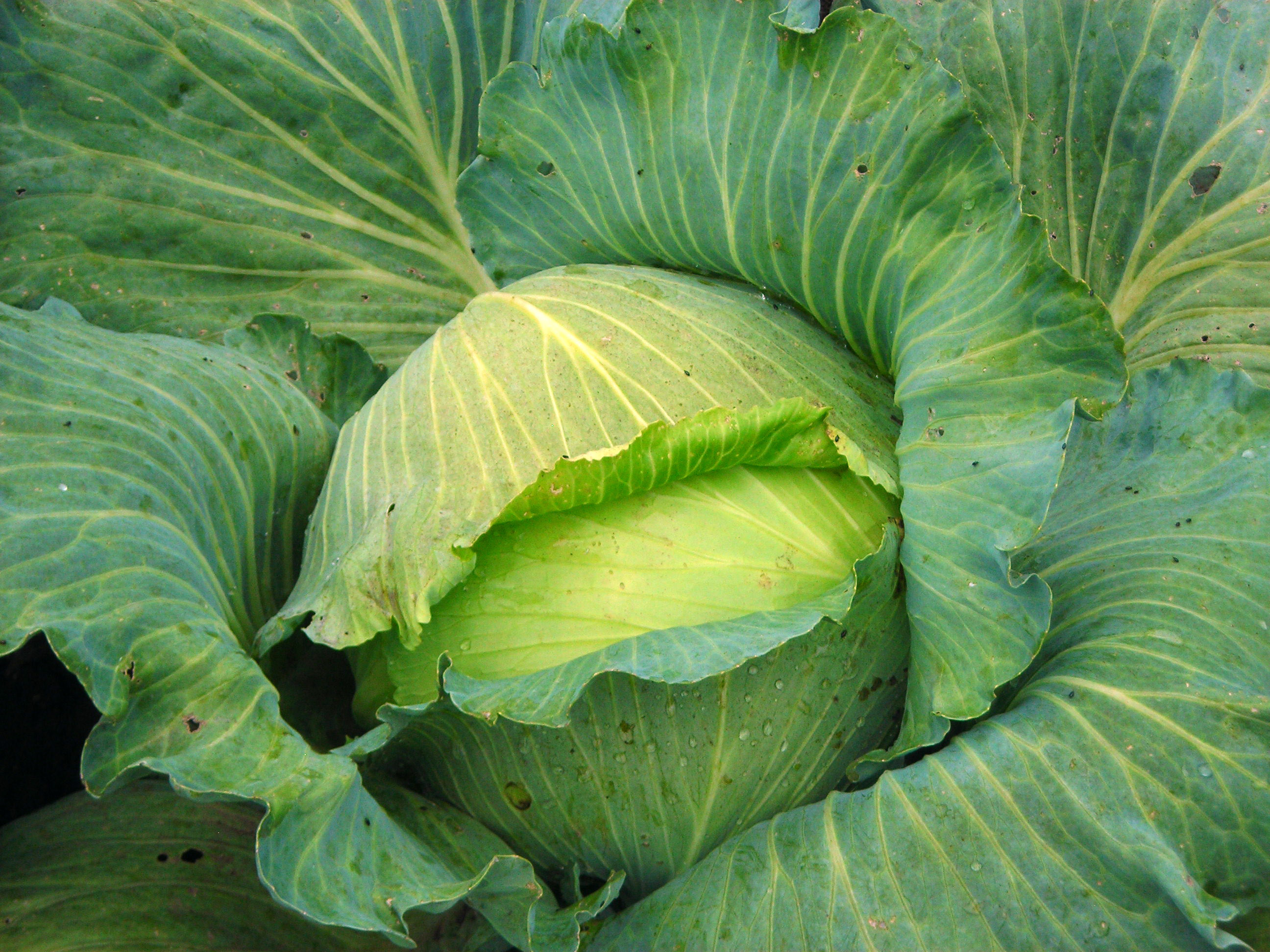How to Grow and Care for Late Flat Dutch Cabbage
Dutch cabbage, specifically the Late Flat Dutch variety, stands out for its impressive size, rich flavor, and excellent storage capabilities. This type of cabbage can grow to monumental sizes, with heads weighing up to 15 pounds (7 kg), making it an ideal choice for feeding a large family or preserving for future use. Its flavor is notably sweeter when harvested at a smaller size, but it retains a pleasant taste even as it grows larger.
The appeal of Late Flat Dutch cabbage extends beyond its physical attributes. Its versatility in the kitchen is remarkable, as it can be used in a myriad of dishes. From fresh, crunchy salads to hearty stews and sautéed dishes, this cabbage adds depth and nutrition wherever it is incorporated. Its robust leaves and firm texture hold up well to various cooking methods, allowing it to be a staple ingredient in both raw and cooked forms.
In addition to its culinary uses, Late Flat Dutch cabbage is also a gardener’s delight due to its ease of growth and resilience. It thrives in USDA zones 3 through 9 and is an open-pollinated heirloom variety that has been cherished since its earliest recorded mention in 1840 in the Netherlands. Brought to America by German settlers, this cabbage has since become a popular choice for its ability to withstand a range of temperatures, though it does best in cooler climates.
For gardeners looking to cultivate this cabbage, it’s important to start seeds indoors eight to twelve weeks before the last expected frost for an early summer harvest. The plants should be hardened off and installed outdoors four weeks before the last frost to ensure mature heads develop before summer heat sets in. For a fall crop, seeds can be direct sown or started indoors, with precautions like using shade cloth to protect seedlings from extreme temperatures.
Overall, Late Flat Dutch cabbage is a reliable, flavorful, and versatile vegetable that enriches both gardens and kitchens with its presence. Whether you are a seasoned gardener or a culinary enthusiast, this cabbage variety offers a bounty of benefits that make it a worthwhile addition to any endeavor.
| Aspect | Details |
|---|---|
| Size and Weight | Can grow up to monumental sizes with heads weighing up to 15 pounds (7 kg). |
| Flavor | Sweeter when harvested at a smaller size, retains a pleasant taste even as it grows larger. |
| Versatility | Used in fresh salads, hearty stews, sautéed dishes; robust leaves hold up well to various cooking methods. |
| Gardening | Thrives in USDA zones 3-9, open-pollinated heirloom variety, easy to grow and resilient. |
| Historical Background | Originated in the Netherlands in 1840, brought to America by German settlers. |
| Cultivation Tips | Start seeds indoors 8-12 weeks before last frost for summer harvest, use shade cloth for fall crop. |
| Overall Benefits | Reliable, flavorful, and versatile vegetable enriching both gardens and kitchens. |
Contents
About Late Flat Dutch Cabbage Plants
Historical Background
The Late Flat Dutch cabbage, with its robust size and sweet flavor, has a rich history that stretches back centuries. Originally cultivated in the Netherlands, this variety is noted for its significant role in European agriculture. It was in the early 19th century that the Late Flat Dutch cabbage made its journey to America, introduced by German settlers who recognized its value and versatility. These settlers brought with them seeds that would flourish in the new world, integrating this cabbage into American agricultural practices.
The importance of this cabbage in historical agriculture cannot be understated. It served as a staple food for many communities, providing essential nutrients during times when fresh produce was scarce. Its ability to store well through the winter made it particularly valuable, ensuring a continuous supply of food. This feature made the Late Flat Dutch a favorite among farmers and homesteaders, who relied on its durability and longevity.
Characteristics of the Plant
The Late Flat Dutch cabbage is known for its distinctive appearance and structure. The leaves of this variety are bluish-green, creating a striking visual contrast in the garden. These large, robust leaves wrap around to form flattened heads, which are characteristic of this type. Inside, the cabbage reveals a creamy light green interior, which is both tender and crisp.

One of the most notable features of the Late Flat Dutch is the size and sweetness of its heads. These can grow to impressive weights, reaching up to 15 pounds (7 kg), although they are often harvested at a smaller size for a sweeter taste. This sweetness is enhanced by the cabbage’s unique growing conditions and the care with which it is cultivated.
Growing Requirements
The Late Flat Dutch cabbage is hardy and adaptable, thriving in USDA zones 3 through 9. This wide range demonstrates its ability to withstand a variety of climates, from the cold winters of zone 3 to the milder conditions of zone 9. However, while it is resilient, the cabbage does have its vulnerabilities, particularly to temperature extremes.
Extreme cold can damage young plants, causing them to suffer and potentially die if not properly protected. Conversely, intense summer heat can also stress these cabbages, leading to bolting or poor head formation. The ideal growing temperatures for this cabbage are between 55 to 75 degrees Fahrenheit (13-24 degrees Celsius), which allows for gradual and steady growth.
| Aspect | Details |
|---|---|
| Historical Background | Originated in the Netherlands, introduced to America by German settlers in the early 19th century. Served as a staple food, providing essential nutrients during times of scarcity. |
| Characteristics of the Plant | Bluish-green leaves, flattened heads, creamy light green interior. Known for large size and sweetness, with heads weighing up to 15 pounds (7 kg). |
| Growing Requirements | Thrives in USDA zones 3-9. Ideal temperatures are between 55 to 75 degrees Fahrenheit (13-24 degrees Celsius). Vulnerable to extreme cold and intense summer heat. |
When to Plant Late Flat Dutch Cabbage
For Early Summer Harvest
For those aiming for an early summer harvest of Late Flat Dutch cabbage, the timeline for sowing seeds is crucial. Seeds should be started indoors eight to twelve weeks before the last expected frost date. This early start gives the seedlings enough time to develop into robust young plants, ready for the challenges of outdoor growth.
Once these seedlings have grown sufficiently, the process of hardening off begins. This involves gradually exposing the young plants to outdoor conditions, reducing their susceptibility to shock when transplanted. After hardening off, the plants should be installed in the garden four weeks before the last frost date. This timing ensures that the cabbages mature before the onset of intense summer heat, which can affect their growth and flavor.
For Late Fall Harvest
For a late fall harvest, gardeners have the option to direct sow seeds or start them indoors. Direct sowing can be effective, but starting seeds indoors offers more control over the early growth stages, especially in regions with unpredictable weather. If starting indoors, the same timeline of eight to twelve weeks before the last frost applies, with adjustments made for the expected cooler temperatures of fall.
Protecting the seedlings from extreme temperatures is vital for a successful fall harvest. Using shade cloth can help mitigate the impact of intense sun and heat, ensuring that the young cabbages develop without stress. This careful protection helps maintain the quality and sweetness of the cabbage heads, leading to a bountiful and flavorful harvest.
| Harvest Timing | Details |
|---|---|
| Early Summer Harvest | Start seeds indoors 8-12 weeks before the last frost. Harden off seedlings before installing them in the garden 4 weeks before the last frost. This ensures maturity before intense summer heat. |
| Late Fall Harvest | Option to direct sow or start seeds indoors 8-12 weeks before the last frost. Use shade cloth to protect from extreme temperatures and ensure quality and sweetness. |
How to Plant Late Flat Dutch Cabbage
Soil Preparation
Growing Late Flat Dutch cabbage begins with proper soil preparation. The ideal soil pH for these cabbages ranges from 6.5 to 7.5, a slightly acidic to neutral environment that allows for optimal nutrient uptake. To achieve this, it’s essential to test the soil pH first and make necessary amendments. If the soil is too acidic, applying garden lime can raise the pH. Conversely, if the soil is too alkaline, incorporating sulfur can help lower it to the desired level.

Beyond pH, the soil should be rich in organic matter. This can be achieved by adding well-rotted compost or aged manure, which improves the soil structure, enhances water retention, and supplies essential nutrients. Ensuring good drainage is also crucial, as cabbages do not thrive in waterlogged conditions.
Planting Process
To get a head start on the growing season, sow Late Flat Dutch cabbage seeds indoors. This should be done 8-12 weeks before the last expected frost for an early summer harvest or a similar timeframe before the first frost for a late fall harvest. Use seed trays and plant seeds about 2 inches (5 cm) apart, covering them lightly with soil.
Once the seedlings have grown and developed a couple of true leaves, they are ready to be transplanted. However, before moving them outdoors, harden off the seedlings by gradually exposing them to outdoor conditions over a week. This process reduces transplant shock and acclimates them to their new environment.
When transplanting, dig holes that are deep enough to bury the stems halfway up to encourage more robust root growth. Space the plants about 18 inches (46 cm) apart in rows that are 24-36 inches (61-91 cm) apart. This spacing allows for adequate air circulation and room for growth.
Optimal Growing Conditions
The preferred temperature range for Late Flat Dutch cabbage growth is between 55 to 75 degrees Fahrenheit (13-24 degrees Celsius). These temperatures promote steady growth and prevent bolting, which can occur in hotter conditions. If temperatures rise above this range, it’s essential to make adjustments to protect the plants.
In warmer conditions, using shade cloth can help reduce the heat’s impact on the cabbages. Additionally, adjusting watering schedules to early morning or late evening can minimize water loss and help maintain cooler soil temperatures.
| Aspect | Details |
|---|---|
| Soil Preparation | Adjust soil pH to 6.5-7.5 with lime or sulfur as needed. Enrich with organic matter like compost or manure. Ensure good drainage. |
| Planting Process | Sow seeds indoors 8-12 weeks before the last/first frost. Harden off seedlings before transplanting. Space plants about 18 inches apart in rows 24-36 inches apart. |
| Optimal Growing Conditions | Maintain temperatures between 55 to 75 degrees Fahrenheit (13-24 degrees Celsius). Use shade cloth in warmer conditions and adjust watering to early morning or late evening. |
Caring for Late Flat Dutch Cabbage Plants
Pest Management
One of the significant challenges in growing Late Flat Dutch cabbage is dealing with pests, particularly cabbage loopers. These caterpillars can cause extensive damage by chewing through the leaves. Regular inspection and handpicking can control their population, but for larger infestations, organic insecticides or Bacillus thuringiensis (Bt) can be effective.
Companion planting is another effective strategy for deterring pests. Planting herbs like dill, thyme, and sage or alliums like onions and garlic nearby can repel many insects due to their strong scents. Marigolds are also beneficial, as they attract beneficial insects that prey on pests.
Watering and Mulching
Consistent watering is crucial for Late Flat Dutch cabbage, especially during dry spells. The goal is to maintain even soil moisture, as fluctuating water levels can lead to splitting heads. Ideally, cabbages should receive 1-1.5 inches (2.5-3.8 cm) of water per week, either from rainfall or supplemental watering.
Mulching around the plants can significantly benefit water retention and temperature regulation. A layer of organic mulch, such as straw, grass clippings, or shredded leaves, helps keep the soil cool and moist. This layer also suppresses weeds, reducing competition for nutrients and water. Mulch additionally adds organic matter to the soil as it decomposes, further enhancing soil health.
By following these guidelines for planting and caring for Late Flat Dutch cabbage, gardeners can ensure healthy growth and a bountiful harvest of this versatile and flavorful vegetable.
| Aspect | Details |
|---|---|
| Pest Management | Regularly inspect and handpick cabbage loopers. Use organic insecticides or Bacillus thuringiensis (Bt) for larger infestations. Plant dill, thyme, sage, onions, garlic, and marigolds as companions to deter pests. |
| Watering and Mulching | Maintain even soil moisture with 1-1.5 inches (2.5-3.8 cm) of water per week. Use organic mulch like straw, grass clippings, or shredded leaves to retain moisture, regulate temperature, and suppress weeds. |
Harvesting and Enjoying Your Cabbage
Harvesting your Late Flat Dutch cabbage at the right time is crucial to enjoying its optimal flavor and texture. The primary sign that the cabbage is ready for harvest is the firmness of the head. When the cabbage head feels solid and dense when squeezed gently, it indicates maturity. Additionally, the size of the head is a good indicator; while Late Flat Dutch can grow to be quite large, a diameter of about 8 to 10 inches is typically ideal for harvesting. You might also observe that the outer leaves are tight and the color of the cabbage is vibrant, further signaling readiness.

To harvest, use a sharp knife to cut the cabbage at its base. Be careful to leave a few outer leaves to protect the head and ensure it stays fresh longer if not used immediately. After harvesting, remove any loose or damaged outer leaves and store the cabbage in a cool, dry place if not using right away. Properly stored, Late Flat Dutch cabbage can keep for several weeks, making it a reliable staple for later use.
The versatility of Late Flat Dutch cabbage in the kitchen is vast. This variety’s sweet flavor and sturdy leaves make it perfect for a range of dishes. It can be shredded into coleslaw or salads for a crisp, fresh taste. Its large leaves are ideal for making stuffed cabbage rolls, a comforting dish where the leaves are filled with a mix of meat, rice, and spices, then baked or simmered in a flavorful sauce.
Late Flat Dutch also excels in cooked applications. It can be sautéed with a bit of butter, salt, and pepper for a simple yet delicious side dish. For a heartier meal, it can be added to stews or soups where it contributes texture and absorbs the rich flavors of the broth. Fermenting this cabbage to make sauerkraut is another excellent way to use it, offering both culinary versatility and probiotic benefits.
| Aspect | Details |
|---|---|
| Harvest Indicators | Head feels solid and dense, typically 8-10 inches in diameter. Look for tight outer leaves and vibrant color. |
| Harvesting Process | Use a sharp knife to cut at the base. Leave a few outer leaves for protection. Store in a cool, dry place if not using immediately. |
| Versatility in Kitchen | Perfect for coleslaw, salads, stuffed cabbage rolls. Can be sautéed, added to stews or soups, or fermented into sauerkraut. |
Growing Late Flat Dutch cabbage presents numerous benefits that extend from the garden to the dining table. Its robust size and sweet flavor make it a standout variety, while its ease of growth and resilience to various climates ensure a successful harvest for gardeners of all levels. The ability to store this cabbage for extended periods further enhances its appeal, providing a reliable source of nutrition throughout the seasons.
Moreover, the versatility of Late Flat Dutch in culinary applications makes it a beloved ingredient among cooks. Whether fresh or cooked, in simple dishes or complex preparations, this cabbage variety enriches every meal with its texture and flavor.
For those considering adding this cabbage to their garden, the rewards are clear. Not only will you enjoy the process of nurturing these plants, but you’ll also reap a bountiful harvest that can be transformed into a myriad of delightful dishes. So, take the plunge and discover the joy and satisfaction of growing and enjoying Late Flat Dutch cabbage in your own backyard.
Cabbage -German Cooked Red Cabbage A Classic Side Dish with Nutrition
Savory Chinese Red Cabbage Recipe A Twist on Tradition
Delicious Discoveries Mastering the Art of Canned Cabbage
Benefits of Cabbage Fufu A Keto Alternative to Traditional
Unlocking the Power of Cabbage for Weight Loss Your Complete Guide
Delicious Baked Red Cabbage with Apple A Versatile Side Dish
Traditional German Red Cabbage A Sweet and Sour Delight